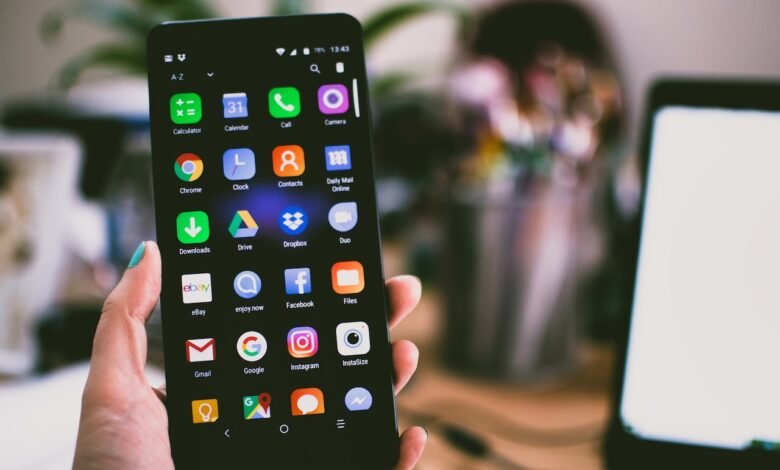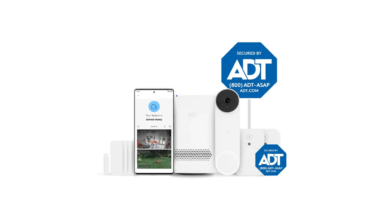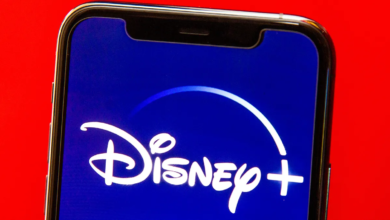5G: The Future of Mobile Connectivity 2023

The world of mobile connectivity has evolved significantly over the years, with each generation offering faster speeds and improved capabilities. As we enter the year 2023, the next phase of this evolution is set to take center stage: 5G. This revolutionary technology promises to transform the way we connect, communicate, and interact with the world around us. In this article, we will delve into the intricacies of 5G, exploring its features, benefits, applications, and challenges.
In the fast-paced digital age, where seamless Mobile Connectivity is a necessity, 5G emerges as a game-changer. Unlike its predecessors, 5G is not just an incremental improvement; it represents a paradigm shift in mobile connectivity. With lightning-fast speeds, ultra-low latency, and massive device connectivity, 5G opens up a world of possibilities for individuals, businesses, and industries alike.
What is 5G?
5G, short for the fifth generation, refers to the latest iteration of wireless technology designed to deliver faster data speeds and enable innovative applications. It builds upon the foundation laid by previous generations, namely 3G and 4G, but takes Mobile Connectivity to unprecedented heights. With 5G, users can experience near-instantaneous downloads, seamless streaming, and real-time responsiveness.
The Evolution of Mobile Connectivity

Before diving into the details of 5G, it’s essential to understand the progression of mobile connectivity. The journey started with 3G, which brought mobile internet access to the masses. It enabled basic web browsing, email, and limited multimedia capabilities. However, as the demand for faster speeds and richer experiences grew, 4G emerged as a significant leap forward. It introduced high-definition video streaming, video conferencing, and the app economy.
Despite the advancements of 4G, the limitations of the network became apparent. As more devices came online and new applications emerged, 4G struggled to keep up with the surging demand. This is where 5G steps in, addressing the shortcomings of its predecessor while ushering in a new era of Mobile Connectivity.
How Does 5G Work?
At its core, 5G relies on a combination of technologies and infrastructure enhancements to deliver exceptional performance. Some key components of 5G Mobile Connectivity include:
Frequency Bands
One of the fundamental aspects of 5G is the use of higher frequency bands. Unlike 4G, which primarily operates within the sub-6 GHz spectrum, 5G takes advantage of higher-frequency bands, including millimeter waves. These higher frequencies enable faster data transmission and increased network capacity, but they also pose challenges in terms of signal propagation and coverage.
Small Cell Technology
To overcome the limitations of higher frequency bands, 5G networks heavily rely on small-cell technology. Small cells are low-power base stations that are deployed in dense clusters to enhance coverage and capacity in specific areas. By utilizing small cells, 5G networks can provide consistent high-speed Mobile Connectivity even in crowded urban environments.
Massive MIMO
Massive Multiple-Input Multiple-Output (MIMO) is another critical technology in the 5G ecosystem. It involves the use of multiple antennas at both the base station and the user device to improve signal quality, increase network capacity, and enhance spectral efficiency. Massive MIMO enables 5G networks to support a massive number of connections simultaneously without sacrificing performance.
Benefits of 5G
The implementation of 5G brings forth a multitude of benefits that will shape the future of mobile connectivity. Some of the notable advantages include:
Faster Speeds
With 5G, users can expect significantly faster download and upload speeds compared to previous generations. Downloading large files, streaming high-definition content, and accessing cloud services will be nearly instantaneous, revolutionizing how we consume and share information.
Lower Latency
Latency refers to the time it takes for data to travel from its source to its destination. 5G offers ultra-low latency, reducing delays to as little as a few milliseconds. This near-real-time responsiveness is crucial for applications that demand instant feedback, such as autonomous vehicles, remote surgery, and virtual reality gaming.
Increased Capacity
The exponential growth of data consumption necessitates a network that can handle the increasing demand. 5G networks are designed to support a massive number of devices and connections simultaneously, without compromising performance. This increased capacity enables seamless Mobile Connectivity in densely populated areas and facilitates the proliferation of Internet of Things (IoT) devices.
Improved Reliability
5G networks prioritize reliability by implementing advanced technologies such as network slicing and edge computing. Network slicing allows the network to be divided into virtual segments, each tailored to specific requirements, ensuring that critical applications receive the necessary resources and guaranteeing a consistent user experience. Edge computing brings processing closer to the network edge, reducing latency and enhancing reliability for time-sensitive applications.
5G Applications and Use Cases
The true potential of 5G lies in its ability to enable innovative applications and use cases across various industries. Some of the prominent areas where 5G will have a transformative impact include:
Autonomous Vehicles
Self-driving cars and other autonomous vehicles heavily rely on real-time data exchange for navigation, safety, and efficient traffic management. 5G’s ultra-low latency and high reliability make it the ideal technology to support the widespread adoption of autonomous vehicles, enabling them to communicate with each other and the surrounding infrastructure seamlessly.
Internet of Things (IoT)
The Internet of Things encompasses a vast ecosystem of interconnected devices, ranging from smart home appliances to industrial sensors. 5G’s increased capacity and low-power requirements make it the perfect enabler for the IoT. It allows for a massive number of devices to be connected simultaneously, facilitating seamless data transfer and real-time monitoring in smart cities, healthcare systems, and industrial automation.
Remote Surgery
Telemedicine and remote surgery hold immense potential in delivering healthcare services to remote areas or during emergency situations. The ultra-low latency and high reliability of 5G enable surgeons to perform complex procedures
remotely with precision and minimal delay. With 5G, doctors can perform surgeries from a remote location, leveraging the benefits of real-time data transmission and augmented reality assistance.
Smart Cities
5G plays a crucial role in building smarter and more sustainable cities. The technology enables seamless Mobile Connectivity among various components of a city’s infrastructure, including transportation systems, energy grids, and public services. With 5G, cities can optimize resource utilization, improve traffic management, enhance public safety, and create more efficient and livable environments for residents.
Enhanced Mobile Gaming
Mobile gaming continues to soar in popularity, and 5G enhances the gaming experience to a new level. The high-speed and low-latency capabilities of 5G ensure smooth and immersive gameplay, enabling multiplayer interactions, cloud gaming, and augmented reality (AR) experiences. With 5G, gamers can enjoy lag-free, high-quality gaming on their mobile devices anywhere and anytime.
Infrastructure Requirements
Implementing 5G requires significant infrastructure investments. Building a robust network of small cells, upgrading existing base stations, and deploying fiber-optic cables require substantial financial resources and coordination among stakeholders. Ensuring widespread coverage in both urban and rural areas is a complex task that requires careful planning and execution.
Read More: 10 Best Auto Clickers for Mac in 2023
Coverage and Accessibility
The higher frequency bands used in 5G have a shorter range and are more susceptible to signal blockage by obstacles like buildings and trees. This poses challenges in providing seamless coverage, especially in areas with complex urban landscapes. Ensuring equal accessibility to 5G across different regions and socioeconomic backgrounds is crucial to bridge the digital divide.
Security Concerns
As Mobile Connectivity expands and more devices become interconnected, ensuring the security of 5G networks is paramount. The large-scale deployment of 5G introduces new attack surfaces and potential vulnerabilities that need to be addressed. Implementing robust security measures, such as encryption, authentication protocols, and network monitoring, is essential to safeguard against cyber threats.
5G Implementation and Rollout
The global implementation of 5G is well underway, with countries and telecommunication providers actively deploying networks and expanding coverage. Several countries, including the United States, South Korea, and China, have made significant strides in 5G deployment. By the year 2023, we can expect 5G networks to be more widespread, providing enhanced Mobile Connectivity and unlocking the full potential of the technology.
The Future of 5G

Looking ahead, 5G is poised to continue its rapid advancement, unlocking new possibilities and driving further innovations. In the coming years, we can expect advancements in areas such as network slicing, edge computing, and the integration of artificial intelligence (AI) to optimize 5G capabilities further. Additionally, the emergence of new use cases and applications will shape the future of 5G, revolutionizing industries and transforming the way we live, work, and connect.
Read More: Here’s how fast 5G on your Samsung Galaxy S23 Really is
Conclusion
As we delve into the year 2023, 5G stands as the beacon of the future of mobile connectivity. With its blazing-fast speeds, ultra-low latency, and vast capacity, 5G is set to redefine the way we interact with technology and unleash a new era of innovation. From autonomous vehicles to smart cities, the applications and use cases of 5G are vast and promising. However, challenges such as infrastructure requirements, coverage, and security must be addressed to ensure a seamless transition into the 5G era.
FAQs
How fast is 5G compared to 4G?
5G offers significantly faster speeds compared to 4G, with download and upload speeds reaching up to 10 gigabits per second (Gbps), whereas 4G typically offers speeds up to 100 megabits per second (Mbps).
Will 5G replace Wi-Fi?
5G is not expected to replace Wi-Fi entirely. While 5G provides cellular Mobile Connectivity on a wide scale, Wi-Fi still serves as a reliable and efficient means of local wireless networking. However, 5G may supplement Wi-Fi in certain scenarios, providing enhanced Mobile Connectivity in areas where Wi-Fi coverage is limited.
Are there any health risks associated with 5G?
Extensive research has been conducted to evaluate the potential health effects of 5G. Based on current scientific knowledge, 5G is considered safe as long as it adheres to international guidelines for electromagnetic radiation exposure. Regulatory bodies closely monitor the implementation of 5G to ensure public safety.
When will 5G be widely available?
5G deployment is already underway in many countries, and its availability is expected to increase significantly in the coming years. However, the timeline for widespread availability varies by region and depends on factors such as infrastructure development and regulatory approvals. By 2023, 5G is projected to be more accessible to a larger portion of the population.
How can businesses leverage 5G Mobile Connectivity technology?
Businesses across various sectors can leverage 5G to enhance their operations and unlock new opportunities. For example, manufacturing industries can benefit from increased automation and real-time monitoring enabled by 5G. Retailers can create immersive shopping experiences using augmented reality (AR) and personalized recommendations. Overall, 5G offers businesses the potential for increased efficiency, productivity, and innovation.












6 Comments